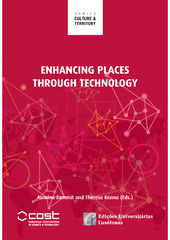Приказ основних података о документу
Tweeting in Open Public Space: Case Study Belgrade
| dc.creator | Djukic, Aleksandra | |
| dc.creator | Vukmirović, Milena | |
| dc.creator | Joković, Jugoslav | |
| dc.creator | Dinkić, Nikola | |
| dc.date.accessioned | 2024-05-07T12:49:40Z | |
| dc.date.available | 2024-05-07T12:49:40Z | |
| dc.date.issued | 2017 | |
| dc.identifier.isbn | 978-989-757-055-1 | |
| dc.identifier.uri | https://raf.arh.bg.ac.rs/handle/123456789/2163 | |
| dc.description.abstract | Public spaces represent essential elements of vibrant, inclusive, and smart cities. Being attractive, safe, comfortable, active and sociable, open public spaces play the main role in revitalizing communities, supporting their sense of identity and culture and triggering their economic development. Considering the current trends and demands in design and use of open public spaces, the role of ICT becomes more important. This paper will present and analyse the connections which are established and intensified between users and open spaces via online social networks. The emphasis will be on Twitter which currently has around 300 million active users. The case study is a network of several open public spaces placed in the historical urban core of Belgrade. The analysed network presents one of the most attractive and important urban route for pedestrians with the squares as nodes. The method that was used in analysis is the method of mapping users on the social maps (via social networks) and through the other ICT tools. It was based on a new software application – Twitter search engine – developed at the University of Nis, Faculty of Electronic engineering, during the PhD course “Advanced topics in data and knowledge engineering”. The aim was measuring the concentrations of users in open public spaces. The obtained results have enabled the determination of the image of the open public spaces perceived by the users, as well as the intensity of users and tweets through the social networks, with the aim to measure the quality of open public spaces and concentration of users. This research has indicated the potential of the analysed area for the formation of transverse and longitudinal pedestrian flows. On the one hand they could enable active use of a selected segment of the network as one of the most important urban pedestrian route of the city, as well as to improve the image of it. | sr |
| dc.language.iso | en | sr |
| dc.publisher | Lisboa : Centro de Estudos Interdisciplinares em Educação e Desenvolvimento (CeiED) | sr |
| dc.publisher | Lisboa : Instituto de Educação - Universidade Lusófona de Humanidades e Tecnologias | sr |
| dc.rights | openAccess | sr |
| dc.source | Enhancing Places through Technology : proceedings from the ICiTy conference Valletta, Malta, 18-19 April, 2016 | sr |
| dc.subject | open public spaces | sr |
| dc.subject | Belgrade | sr |
| dc.subject | tweets | sr |
| dc.subject | social maps | sr |
| dc.title | Tweeting in Open Public Space: Case Study Belgrade | sr |
| dc.type | conferenceObject | sr |
| dc.rights.license | ARR | sr |
| dcterms.abstract | Вукмировић, Милена; Дјукиц, Aлександра; Јоковић, Југослав; Динкић, Никола; | |
| dc.citation.spage | 191 | |
| dc.citation.epage | 203 | |
| dc.identifier.fulltext | http://raf.arh.bg.ac.rs/bitstream/id/7621/bitstream_7621.pdf | |
| dc.identifier.rcub | https://hdl.handle.net/21.15107/rcub_raf_2163 | |
| dc.type.version | publishedVersion | sr |

